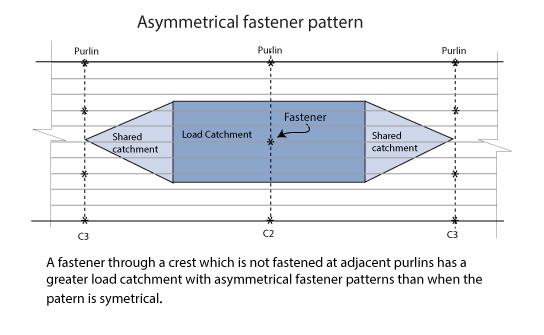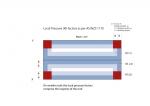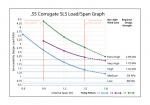NAILING PATTERNS FOR CORRUGATE

The following is a summary of nailing pattern requirements on roofs designed to the standard of NZS 3604:2011. This replaces the nailing patterns published in the Rooflink Winter 2016 issue.
Use one pattern over the whole roof
On engineered buildings including houses in SED wind zones, the local pressure factors vary from 1.0, 1.5, 2.0, and 3.0 depending on their location. Fortunately NZS 3604 simplifies this by applying a factor of 1.5 over the entire roof.
For pierce fastened profiles use serviceability design loads, not ultimate design loads
Why do we use serviceability loads? In building design, load calculations are made for ultimate design loads (when the roof would blow off) and serviceability design loads, (when the roof will permanently distort.)
An ultimate design load is about 1 ½ times the serviceability design load. In testing we find that ultimate failure loads are about twice serviceability failure loads. Therefore if a pierce fastened profile passes a serviceability design load test for a particular design, it will easily exceed ultimate deign loads.
Use the same fastener pattern on every purlin
It is intuitive that if a given fastener pattern is marginal for a situation, then alternating rows with denser fastener patterns will give greater resistance. However when you observe a wind uplift test you can understand why doing such can be counter-productive.
When a symmetrically fastened sheet is under uplift load, the unfastened crests bow upwards for the entire length of the sheet, the pressure being shared by the adjacent crests’ fasteners. Put a fastener into that otherwise unrestrained crest, and that fastener will be trying to resist uplift of that crest for the entire length of the sheet.
Our generic testing indicates that asymmetrical fastener patterns will provide similar load resistance than the lesser of the two patterns on its own would provide. In some cases they may even provide less.
New fastener pattern codes represent the number of fasteners per sheet
New codes denoting fixing patterns will reflect the number of fasteners per sheet, i.e. the former fixing pattern C2 with 4 fasteners per sheet will now be coded C4, C3 and will require 3 fasteners per sheet, etc.
The new load span graphs show NZS 3604 wind zones
The new fastener tables will show the relevant Wind Zone from NZS 3604, as well as the kilopascal values. That will be easier for both roof installers and compliance officers alike.
For buildings designed outside of NZS 3604 the design loads on the graphs may be used.
Outside of NZS 3604 ask the designer for the serviceability design wind loads.
Why ask the designer to do it? Because calculation of wind pressures is very complicated, even the experts can arrive at some quite different calculation results for the same job. The design loads have already been calculated by an engineer and agreed by the TA prior to the consent being issued. No need to do it again.
If a designer specifies that fastener patterns should be based on a given wind speed, ask them for a roof plan giving purlin spacing and serviceability design loads. (Or ultimate loads in respect of clip fastened products.) Ultimate loads can be converted to serviceability loads (if necessary) by applying a factor of .71 in all parts of the country.






